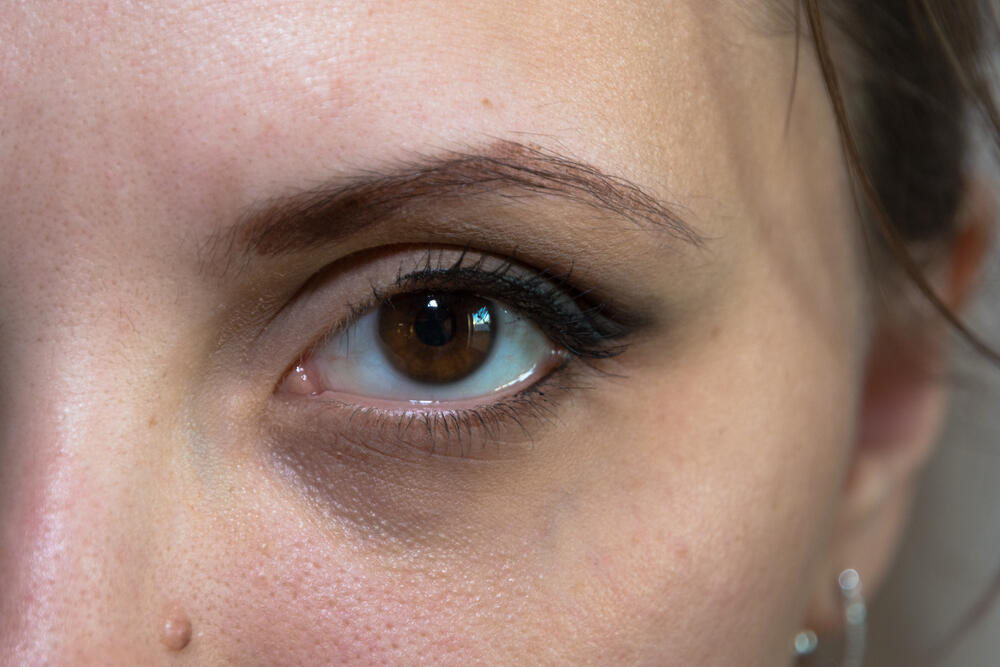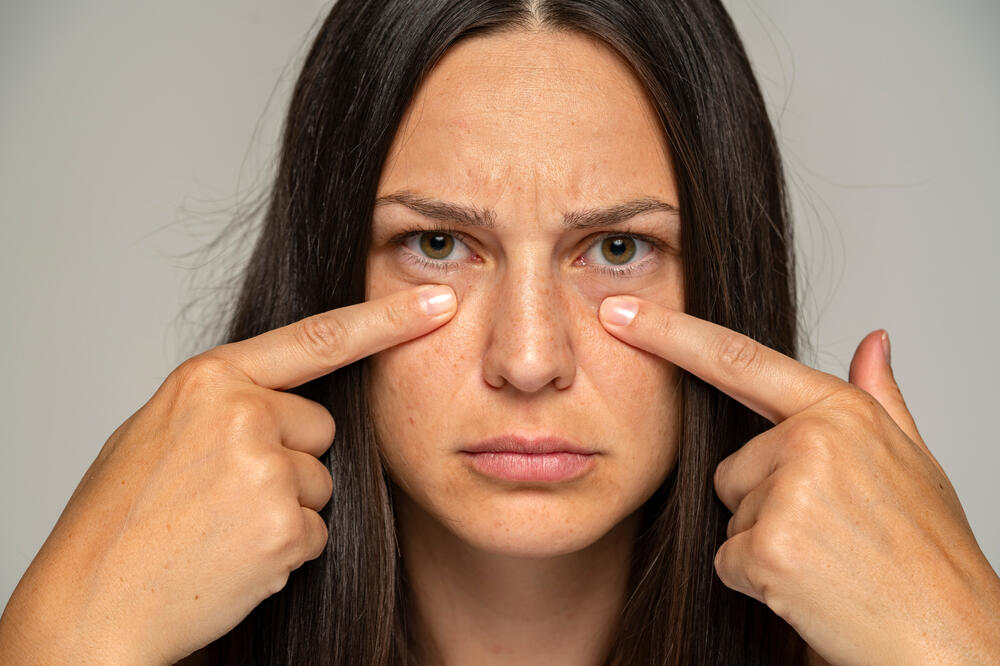The term 'bags under the eyes' refers to puffy outlines that can appear on the thin skin around the eyes, and are often accompanied by dark circles or dark circles.
Although bags under the eyes are most often the result of fatigue and exhaustion and appear after sleepless nights, there are also some other causes that can cause them to appear. Fortunately, there are a number of home and professional treatments that can reduce or at least alleviate their appearance, regardless of the cause, writes Health.
What causes bags under the eyes?
Puffiness and puffy bags under the eyes usually develop as a result of excess fluid or a layer of fat in the area. They are most often caused by:
Aging and genetics – as we age, the skin becomes looser and loses volume, which leads to more pronounced bags under the eyes.
Allergies - various allergens can cause congestion and inflammation along the sinuses, causing the area under the eyes to appear swollen.
Fluid retention - it can also appear in people who have problems with fluid retention, due to a diet rich in sodium or dehydration.
Lack of sleep - lack of sleep negatively affects the appearance of the skin, leads to the appearance of bags under the eyes and dark circles.
Infections or certain health conditions - infections or disorders affecting the area around the eyes such as conjunctivitis or blepharitis, certain thyroid problems and other conditions can cause puffiness under the eyes.
Although puffy eyes can happen to anyone, some people are more prone to them than others. A big role in their appearance is played by genetics, as well as the number of years. They are more common in older people.
Home remedies
Depending on the cause, there are numerous home remedies that can alleviate their appearance:
Cold compresses - using cold compresses along the under eye area can help reduce blood flow to this sensitive area - this reduces inflammation and encourages the constriction of blood vessels that lead to puffiness under the eyes and dark circles. It is best to use a cold cloth or ice and apply light pressure to the area.

Products with retinol, vitamin C or caffeine - serums and creams for the eye area that contain these ingredients promote skin regeneration, reduce the appearance of wrinkles, lighten dark circles and reduce the appearance of bags under the eyes. For example, eye creams with vitamin C as the main ingredient restore firmness to the skin, smooth it and reduce puffiness. Caffeinated creams also reduce swelling, boost circulation and reduce inflammation.
Green and black tea - research has shown that green or black tea bags can help reduce puffiness under the eyes and dark circles. This is because these teas are rich in antioxidants and caffeine and have anti-inflammatory properties - they stimulate blood flow in the skin and smooth the area around the eyes. To reduce puffiness, place cold tea bags under the eyes.
Gentle massage - gently massaging the sensitive area around the eyes with your fingers or a jade roller can help reduce inflammation, pain and swelling under the eyes, especially after cosmetic procedures, according to Health.
Medical treatments
When home treatments do not help in treating puffiness under the eyes, it is best to turn to the experts. There are various professional options for tightening the skin around the eyes. Among the most popular are chemical peels, fillers, laser treatments and cosmetic procedures such as blepharoplasty, which can permanently solve the problem.
How to prevent swelling under the eyes?
Although it cannot be completely prevented, there are certain methods and steps that experts recommend that can mitigate their occurrence:
Using products with SPF protection - the skin around the eyes is very thin and sensitive, so it is important to protect it from harmful UV rays that cause premature aging and the appearance of wrinkles.
Quality sleep - an adult needs 7 to 9 hours of sleep every night. Experts recommend sleeping on a slightly elevated pillow to prevent puffiness under the eyes.
Stress management - an increased level of the stress hormone - cortisol - can affect the appearance of the skin, so it is important to find techniques to deal with stress, such as exercise, breathing and meditation.
Reducing sodium intake and regular hydration - foods with a lot of salt lead to fluid retention in the body, so it is better to avoid them. In addition, it is crucial to drink enough water to maintain the proper level of hydration in the body.
Quitting smoking - besides being harmful to health, smoking also leads to thinning of the skin and loss of collagen in the area under the eyes and promotes premature aging.
For most people, puffiness under the eyes is a cosmetic problem and not a cause for concern. However, if the area around the eyes is painful, sensitive to the touch, itchy, red or discolored, it would be a good idea to see a doctor to find out the essence of the problem. These can be signs of an allergic reaction or another health condition, such as problems with the thyroid gland, sinuses, and kidneys.
Bonus video:





